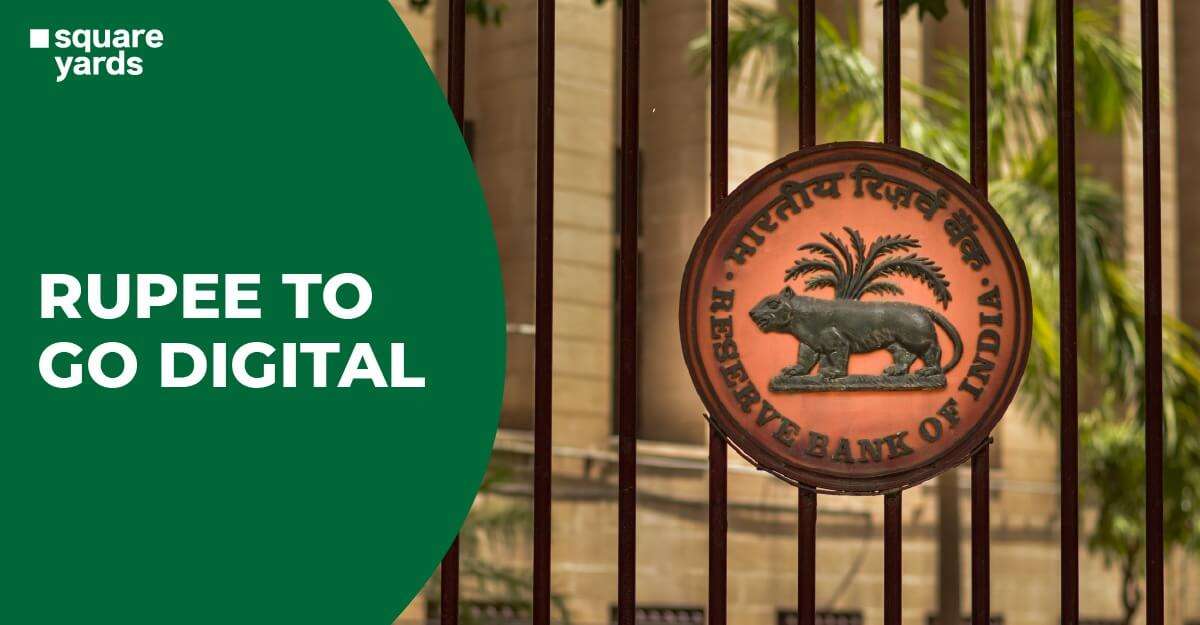The Reserve Bank of India is to begin small initial releases of digital rupee backed by the Central Bank for specific use cases, according to a concept paper issued on Friday, October 7. The RBI has been analysing the merits and demerits of digital currency backed by a country’s central bank for some time and is currently preparing a strategy to roll one out gradually.
The RBI stated that use applications for an e-rupee are now being examined in a way that disrupts the financial system as little as possible.
The introduction of a digital rupee for the duration of the current fiscal year was announced by the Indian government in February. The concept of a digital currency that a central bank controls has attracted attention and traction in many countries with the advent of cryptocurrencies.
According to the RBI, it is the central bank’s responsibility to provide its users with risk-free digital currency so they can conduct digital currency transactions with the same ease as they would with private cryptocurrencies.
Table of contents
What is E Rupee?
If you’re wondering, what is E Rupee after reading the information mentioned above, let’s make it easier to understand.
The RBI looks at a digital variety of the Indian rupee called the “e-rupee” or “digital rupee.” The RBI proposed two versions—one for retail distribution to the general public and the other for interbank settlement. Per the RBI’s indirect model, citizens will keep their digital or e- rupee in a wallet with a service provider or a bank.
Central Bank Digital Currency
The RBI may consider a retail CBDC that is “token-based” as contrasted to a wholesale CBDC that may be “account-based” because they are similar to cash and are “token-based.”
The RBI also decided that banks could serve as middlemen in the e-issuance. The central bank kept its doors open to various technological developments. The concept paper states that the final design will consider the pilot programmes’ results.
“A CBDC is anticipated to give an extra payment pathway to consumers, not to replace the present payment systems,” the bank said. “A CBDC is aimed to complement, rather than replace, current forms of money.”
And over 60 central banks worldwide have expressed interest in CBDC, based on the concept note. In the retail and wholesale industries, a few implementations are being tested, and numerous others are performing experiments, testing, and/or developing their own CBDC systems.
see also – RBI’s New Guidelines: Augmenting Card Issuance Efficacy and Cybersecurity
Additional Insights on the Concept Note
In the concept note, the country’s e-rupee system is explained in terms of its history, goals, preferred design elements, and other policy frameworks. According to the statement, the objective is to develop an innovative, open, inclusive, interoperable CBDC system to assist India’s contemporary digital economy. The note also stated that, given the limited number of CBDCs issued by the few countries that have done so to date, the prospective influence regarding monetary policy, the introduction of CBDC is yet unknown and simply hypothetical.
After considering the issues with anonymity, appropriate analysis of the Big Data produced by CBDC can support the development of evidence-based policy. For service providers of financial product insights, it might also develop into a rich data source. Additionally, the information would be very helpful for pursuing money laundering laws; read the concept note.
In a Nutshell
The RBI noted that the concept note’s distribution was intended to increase public awareness of CBDCs in general and the proposed characteristics of the digital rupee, particularly. The Reserve Bank’s plan for implementing the digital rupee is laid forth in the document. According to the Reserve Bank, its strategy is determined by two primary goals: to create a digital rupee that is as comparable to paper currency as possible; and to smoothly implement the launch of the digital rupee.






















